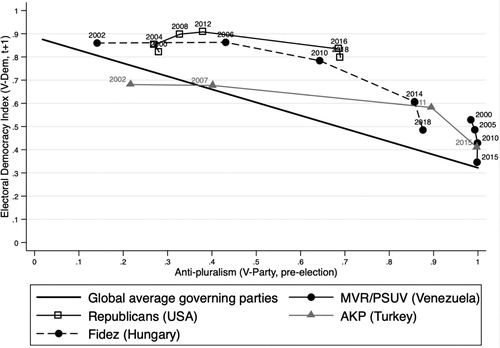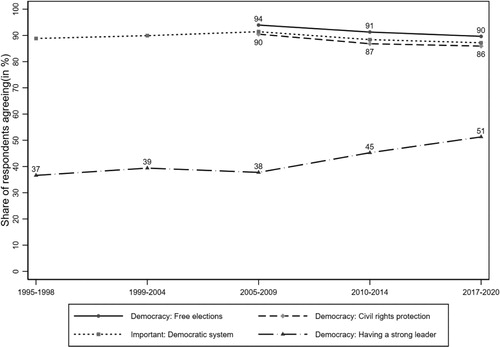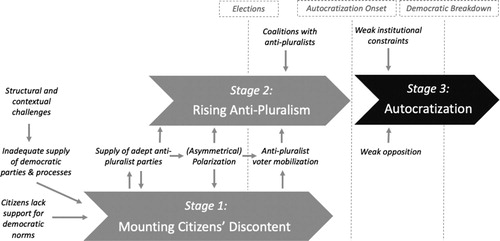Figures & data
Figure 2. Anti-pluralist party traits and electoral democracy (2000–2019).
Note: The Electoral Democracy Index ranges from 0 (not democratic) to 1 (fully democratic). The Anti-Pluralism Index ranges from 0 (pluralist) to 1 (anti-pluralist). N = 682.

Figure 3. The attitude of citizens living in a democracy towards democracy since the mid-1990s (WVS). Source: Inglehart et al., “World Values Survey”. Includes only citizens in countries classified as democracies at the beginning of the WVS wave by the Regimes of the World measure. Coppedge et al. “V-Dem dataset V10.”



